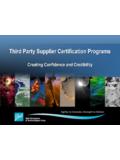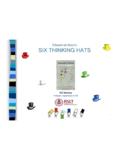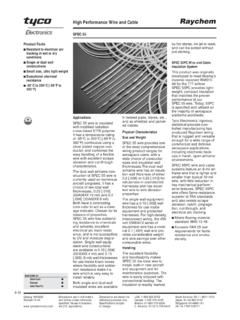Transcription of What Is STEM Education and Why Is It Important?
1 1 White Florida Association of Teacher Educators Journal 2014 Florida Association of Teacher Educators Journal Volume 1 Number 14 2014 1-9. What Is stem Education and Why Is It Important? David W. White Florida A&M University, Tallahassee, Florida _____ This article looks at many aspects of stem Education , both in k-12 Education as well as the post-secondary arena. The article provides a historical perspective regarding the roots of stem and then follows up with the contemporary aspects of stem Education .
2 The T & E of stem Education are also explored. The article culminates with the roles teaches play in stem Education . _____ Introduction What is this term they call stem Education ? Most people are in the dark and moreover, most educators and students are as well. When one hears the acronym stem within an educational setting, they may think along the lines of stem cell research or something dealing with flowers (Angier, 2010). However, stem stands for Science, Technology, Engineering and Mathematics.
3 On January 25, 2011, the first sitting President of the United States spoke the words Science, Technology, Engineering and Math in his State of the Union Address The President stated: Let's also remember that after parents, the biggest impact on a child's success comes from the man or woman at the front of the classroom. In South Korea, teachers are known as "nation builders." Here in America, it's time we treated the people who educate our children with the same 2 level of respect.
4 (Applause.) We want to reward good teachers and stop making excuses for bad ones. (Applause.) And over the next 10 years, with so many baby boomers retiring from our classrooms, we want to prepare 100,000 new teachers in the fields of science and technology and engineering and math ( , 2011). This was a milestone for stem Education , but it is not a new concept derived by the White House. stem Education (in one form or another) has been around for decades; however, legislators and educational administrators are now recognizing its importance.
5 This research will attempt to provide a clear definition of stem through a historical narrative as well as contemporary aspects in which stem is being implemented. The initial knee-jerk reaction of people who have heard of stem (in an educational setting) but don t know the history and contemporary implementation of stem Education is that stem has something to do with science and/or computers. While science and computers are a part of stem , they are educational mechanisms and concepts that are used by stem stakeholders to implement and/or produce a stem outcome.
6 Historical Aspects stem Education was originally called Science, Mathematics, Engineering and Technology (SMET) (Sanders, 2009), and was an initiative created by the National Science Foundation (NSF). This educational initiative was to provide all students with critical thinking skills that would make them creative problem solvers and ultimately more marketable in the workforce. It is perceived that any student who participates in stem Education , particularly in the K-12 setting would have an advantage if they chose not to pursue a post-secondary Education or would have an even greater advantage if they did attend college, particularly in a stem field (Butz et al.)
7 , 2004). Although the use of stem concepts (historically) were being implemented in many aspects of the business world; , the Industrial Revolution, Thomas Edison and other inventors, it was not being utilized in traditional educational settings. The use of stem was primarily used in engineering firms to produce revolutionary technologies such as the light bulb, automobiles, tools and machines, etc. Many of the people responsible for these innovations were only slightly educated and/or were in some type of apprenticeship.
8 For example, Thomas Edison did not attend college (Beals, 2012), nor did Henry Ford; although Ford did work for Thomas Edison for a number of years. These giants of innovation used stem principles to produce some of the most prolific technologies in history: however, stem in Education was virtually non-existent (Butz et al., 2004). stem Education was the result of several historical events. Most notable was the Morrill Act of 1862. This Act was responsible for the development of land grant universities that, in the beginning, focused mostly on agricultural training, but soon engineering based training programs formed (Butz et al.)
9 , 2004). For example, The Ohio State University was established in 1870, but 3 was originally named the Ohio Agricultural and Mechanical College (Background of Ohio State, 2012). As more and more land grant institutions were being established, more and more stem Education training was ultimately being taught and eventually assimilated into the workforce. Other historical events pushed stem Education to grow and flourish. Two such events were World War II, and the launch of the, then, Soviet Union s Sputnik.
10 World War II The technologies invented and implemented during WWII are almost immeasurable. From the Atomic Bomb (and other types of weaponry) to synthetic rubber to numerous types of transportation vehicles (both land and water), it was clear that American innovation was flourishing. Scientists, mathematicians, and engineers (many from academia) worked hand-in-hand with the military to produce innovative products that helped win the war and to further stem Education (Judy, 2011). It must also be noted that the NSF was formed at the end of the WWII in an effort to not only recognize the immense contribution of the talented men and women who created prolific commodities, but to preserve the research and documentation of those commodities (Mervis, 2010).






